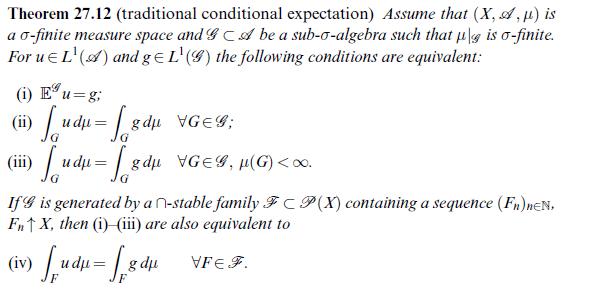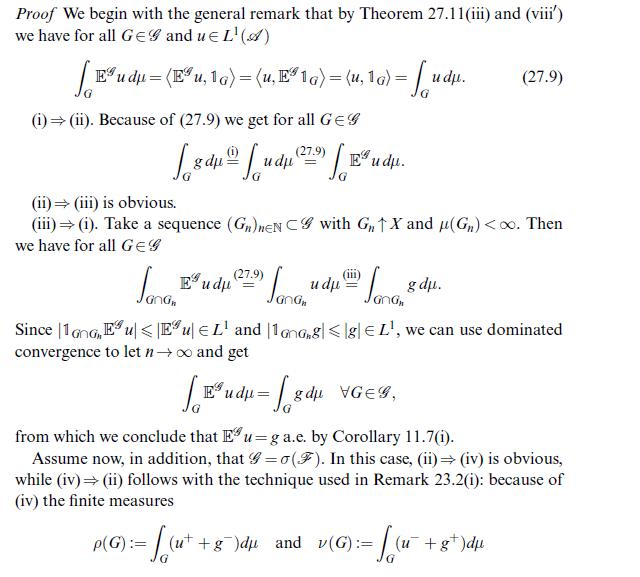Conditional expectations. Let ((X, mathscr{A}, mu)) be a (sigma)-finite measure space and (mathscr{F} subset mathscr{A}) be a
Question:
Conditional expectations. Let \((X, \mathscr{A}, \mu)\) be a \(\sigma\)-finite measure space and \(\mathscr{F} \subset \mathscr{A}\) be a sub\(\sigma\)-algebra. Then use the Radon-Nikodým theorem to show that for every \(u \in \mathcal{L}^{1}(\mathscr{A})\) there exists a - unique up to null sets - \(\mathscr{F}\)-measurable function \(u^{\mathscr{F}} \in \mathcal{L}^{1}(\mathscr{F})\) such that
\[\int_{F} u^{\mathscr{F}} d \mu=\int_{F} u d \mu \quad \forall F \in \mathscr{F} .\]
Use this result to rephrase the (sub, super)martingale property 23.1 .
Remark. Since \(u^{\mathscr{F}}\) is unique (modulo null sets) one often writes \(u^{\mathscr{F}}=E^{\mathscr{F}} u\), where \(E^{\mathscr{F}}\) is an operator which is called conditional expectation. We will introduce this operator in a different way in Chapter 27 and show in Theorem 27.12 that we could have defined \(E^{\mathscr{F}}\) by (25.21).
Data from theorem 27.12



Step by Step Answer:






